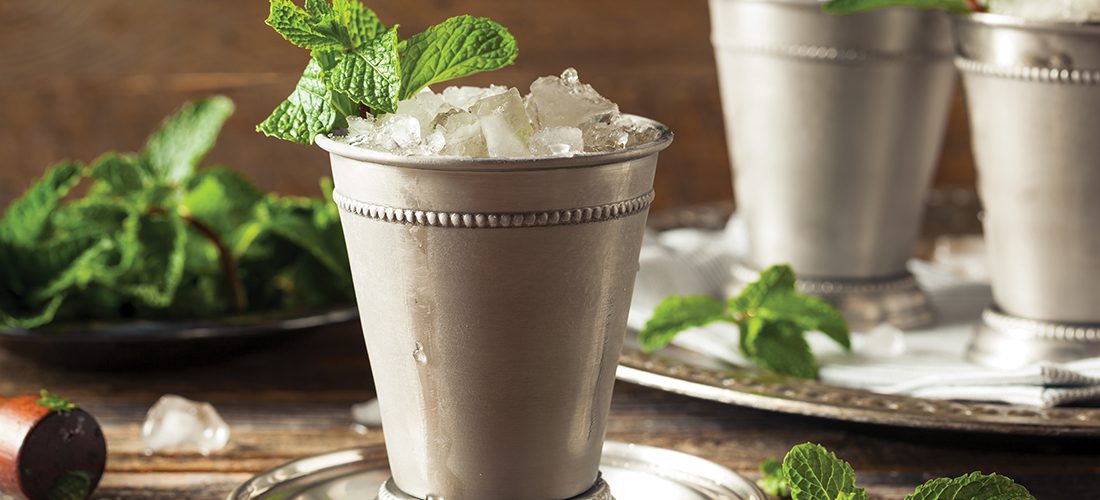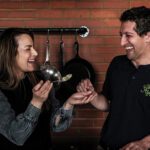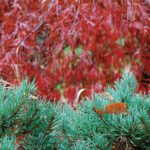The summer herb garden
July 1, 2021

Beat the heat with herb-infused dishes and cocktails.
by Philip Carter
The steamy days of summer are finally here. Even as the owner of a landscape company, the last thing I want to do after work on a sizzling afternoon is spend a lot of time working in the vegetable garden.
The same sun that brings the heat, however, has a tendency to make me yearn for something cool and refreshing. Where should I look for such a specimen? Over in the corner, and dappled here and there in sunnier parts of the garden, lie the various herbs that by now are growing like gangbusters.
These plants are the little details that make that drink more refreshing, or that chimichurri on the grill smell so much more intoxicating. The herbs I planted in spring are now overflowing, and being the tidy gardener I pretend to be, it is my duty to pick that mint for my cocktails.
But what if you didn’t start any herbs back in the spring? Well my friend, you’re in luck. July still leaves plenty of time for you to get your herb on.
When it comes to planting herbs in the garden, I always say this is the place to let your imagination run a little wild. For the most part, herbs are fairly inexpensive, whether you grow them from seed or from a small container. There are a few different ways I like to use herbs in the garden.
First, I like to have a small cluster by the kitchen door or in a sunny location that’s easily accessible. This is where I keep the ones I use most frequently in cooking — rosemary, basil, thyme, cilantro, parsley.
Elsewhere in the garden, I recommend placing herbs where they can actually benefit the space. For example, try planting thyme between the cracks of stepping stones, or mint in a sunny, damp spot where it can run free. Herbs such as basil, sage or rosemary can also be used as filler in containers around a pool or porch.
If you planted your herbs in the spring, you have probably realized that a few plants can go a long way. (No, your sister would not like any more basil, and the neighbors might have had enough of the salsa verde they were so complimentary of a few weeks back.)
However, if you are planting later in the season, there are a few simple tips to follow. First, make sure the plants will have some room to mature. Good air circulation helps keep disease and pests in check. Rosemary, in particular, can become quite large. Varieties such as mint are also partial to spreading like mad, so plant in the ground or start with a good-sized pot.
Second, make sure to use good bedding or potting soil. This will probably go the furthest in making sure your harvest is bountiful. Good soils also do a better job at holding onto moisture, reducing the need to water as frequently.
Third, make sure to cut back the overgrowth. This will help keep the plant nice and tender, and it will also help ensure it doesn’t go to seed before the season winds down. Truly, there are 100 different ways to go about adding herbs to the garden. This should be a low-stress activity, and one that has a high rate of success. The main thing to keep in mind is to try to have fun with it.
For those who like to dabble in the kitchen, here are a few tried-and-true recipes to help use the fruits of your labor.
Chimichurri
Chimichurri can be used to baste meats (chicken or steaks) while grilling or barbecuing. You can also use it as a marinade.
Ingredients:
1/2 cup olive oil
2 tablespoons red wine vinegar
1/2 cup finely chopped parsley
3-4 cloves garlic, finely chopped or minced
2 small red chilies, or 1 medium red chili, deseeded and finely chopped (about 1 tablespoon finely chopped chili)
1 1/2 teaspoons finely chopped oregano
1 level teaspoon coarse salt
pepper to taste (about 1/2 teaspoon)
Directions:
Mix all ingredients together in a bowl. Allow to sit for 5-10 minutes to release all of the flavors into the oil before using. Ideally, let sit for more than 2 hours. Chimichurri can be prepared earlier than needed and refrigerated for up to 24 hours. It can also be frozen into ice cubes for two to three months.
Mint julep
Ingredients:
6-8 mint leaves, plus extra for garnish
1 1/2 teaspoons sugar or 1/4 ounce simple syrup
2 1/2 ounces bourbon
crushed ice
Directions:
1. Place mint leaves and sugar or simple syrup in a julep cup, Collins glass or double old-fashioned glass.
2. Muddle well to dissolve the sugar and release the oil and aroma of the mint. Gently muddle your mint — the intention is to release the essential oils, not tear the leaves to bits.
3. Add bourbon.
4. Fill the glass with crushed ice and stir well until the glass becomes frosty. This should take at least 30 seconds, but the longer you do it, the better.
5. Before garnishing with an additional mint sprig, gently clap it in your hands to release the aromatic oils. Serve and enjoy.
Herb-crusted salmon
Ingredients:
1 salmon filet (about 2 pounds, left whole)
3 cloves garlic, finely minced
1/4 cup chopped parsley
1/2 cup chopped Parmesan cheese
Directions:
Preheat oven to 425º F. Line pan with parchment paper for easy cleanup afterward. Place the salmon, skin side down, onto lined baking sheet. Cover the salmon with another piece of parchment paper. Bake for 10 minutes. Remove from the oven, and remove the top piece of parchment. Top with garlic, Parmesan and parsley mixture. Return to the oven uncovered, and bake until the cheese has melted, the salmon flakes easily with a fork, and the fish registers 135º F when checked with an internal thermometer, about 5 more minutes. The Parmesan should be melted and lightly browned. Allow to rest about five minutes, and serve. SP
Philip Carter is the owner of Allium Fine Gardens, a boutique garden design firm serving Charlotte and Charleston, S.C.






